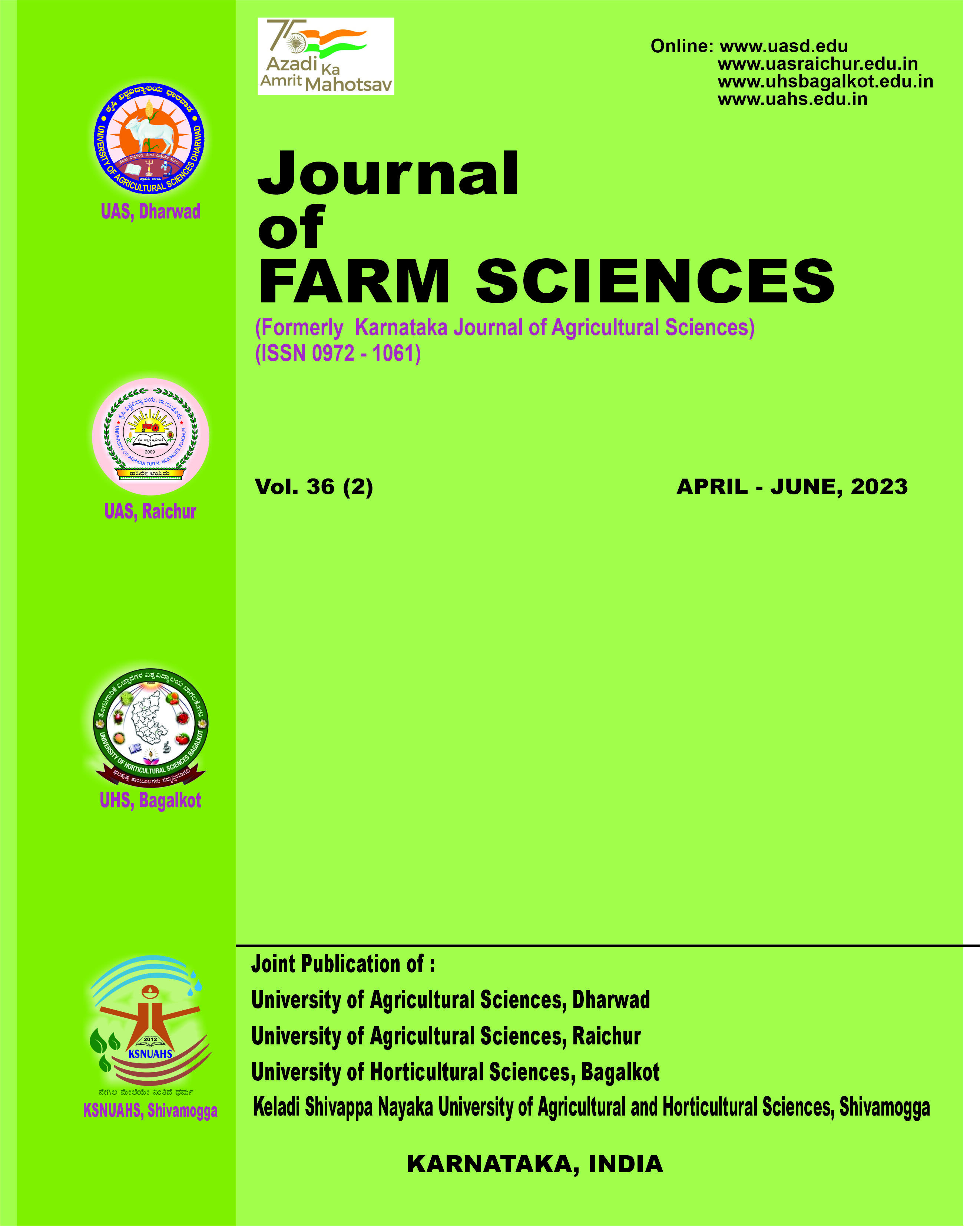Developing suitable genetically potential combiners and combinations of maize (Zea mays L.) for rainfed ecosystem
Keywords:
Gene action, General combining ability, Heterosis, Maize
Abstract
An investigation was undertaken to assess the combining ability, nature of gene action and heterosis with respect to grain yield and its component traits in 48 single cross hybrids of maize developed by crossing 16 lines and three testers in line x tester fashion in rabi 2017-18. These hybrids and parents were evaluated against three popular checks during kharif 2018 under rainfed ecosystem. Analysis of variance revealed that mean sum of squares of parents and hybrids were significant for 13 characters which imply that presence of variability among the treatments. The contribution of female towards hybrid variance was higher than the males and line x tester interaction for all the characters except shelling percentage. The gene action study revealed highest magnitude of non-additive gene action than additive gene action for all the characters that were studied except days to 50 per cent tasseling, days to 50 per cent silking, days to 75 per cent brown husk maturity and cob girth. The lines viz., NBPGR-1, NBPGR-7, NBGPR-8, NBPGR-9, NBPGR-11 and NBPGR-13 were good general combiners for maximum number of yield contributing characters and the crosses GPBMH-1820 (NBPGR- 9 x KDMI-16) and GPBMH-1836 (NBPGR-14 x CI-4) were superior with highest magnitude of per se performance along with significant positive SCA effects for most of the yield and yield contributing traits. The crosses viz., GPBMH-1820, GPBMH-1832, GPBMH-1803, GPBMH-1821, GPBMH-1802, GPBMH-1836, GPBMH-1843, GPBMH-1812, GPBMH-1831 and GPBMH-1811 were exhibited highest percentage of standard heterosis over the checks.
Published
2021-09-20
How to Cite
BASAVARAJESHWARI, H., & WALI, M. C. (2021). Developing suitable genetically potential combiners and combinations of maize (Zea mays L.) for rainfed ecosystem. Journal of Farm Sciences, 34(03), 230-236. https://doi.org/10.61475/jfm.v34i03.315
Section
Research Article
Copyright (c) 2021 Journal of Farm Sciences

This work is licensed under a Creative Commons Attribution-NonCommercial-NoDerivatives 4.0 International License.


